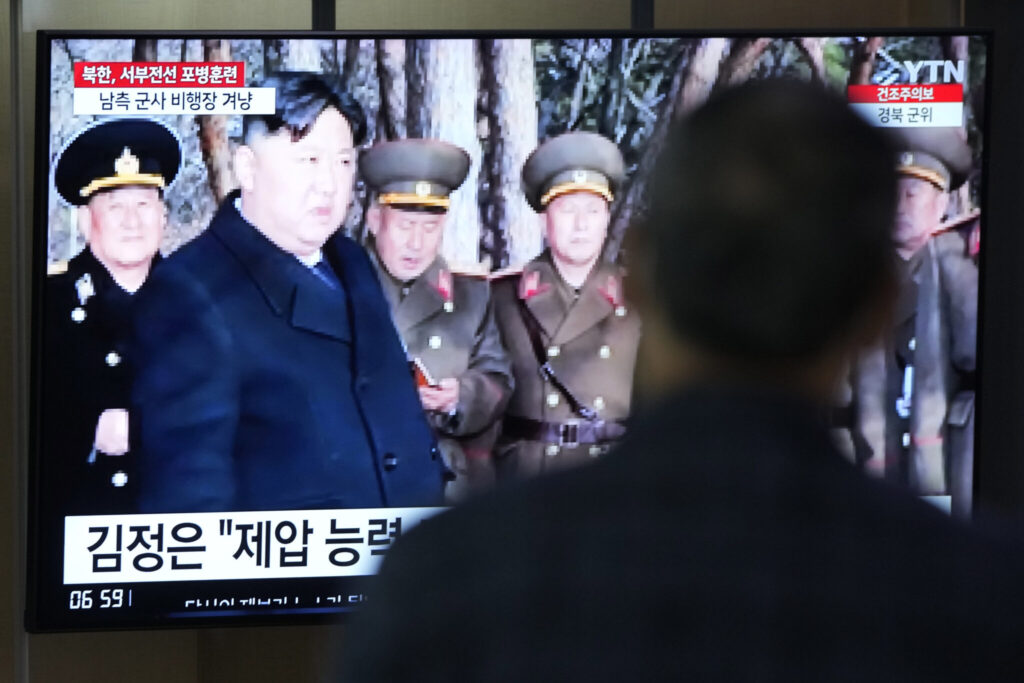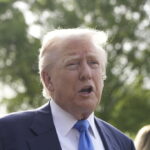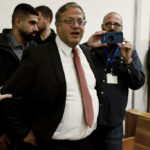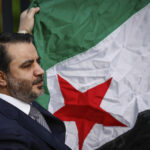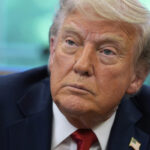South Korea’s military says it has detected that North Korea fired a short-range ballistic missile towards waters off its western coast. The South’s Joint Chiefs of Staff said the weapon was fired from an area near the western coastal city of Nampo. It did not immediately release an assessment of how far the missile flew. The Associated Press has the story:
N Korea’s Kim supervises frontline artillery drill
Newslooks- SEOUL, South Korea (AP)
North Korean leader Kim Jong Un supervised a frontline artillery drill simulating an attack on an unspecified South Korean airfield as he called for his troops to sharpen their combat readiness in the face of his rivals’ “frantic war preparation moves,” state media said Friday.
The North Korean report came a day after South Korea’s military detected the North firing at least one short-range ballistic missile toward the sea from a site near the western coastal city of Nampo. That raised the possibility that more missiles may have been launched from the area simultaneously.
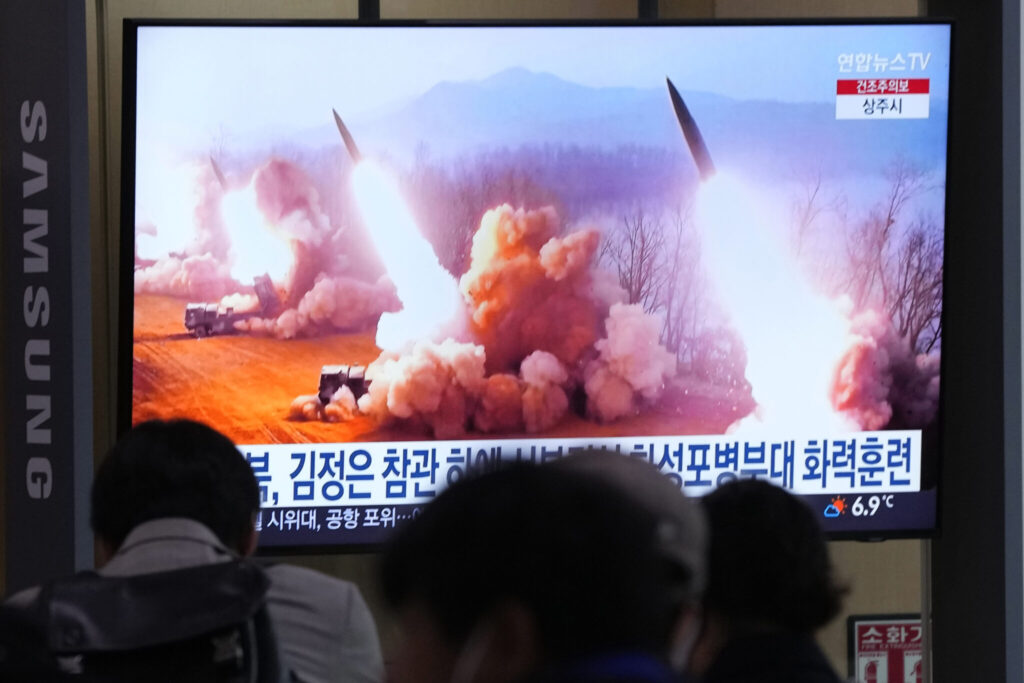
The launch came as South Korea and the United States prepare to kick off their biggest combined military training exercise in years to counter the growing threat of Kim’s nuclear arsenal, which he has aggressively expanded in recent years despite the North’s deepening economic isolation and pandemic-related difficulties.
Pyongyang’s official Korean Central News Agency said that Kim urged his troops during Thursday’s exercise to be prepared at any time to “overwhelmingly respond to and contain” the military action of the North’s enemies, which he said were proceeding with “all sorts of more frantic war preparation moves.”
He said frontline assault units should steadily intensify various simulated drills to prepare for a broad range of real-war situations and sharpen their capabilities to carry out their two main “strategic missions, that is first to deter war and second to take the initiative in war.”
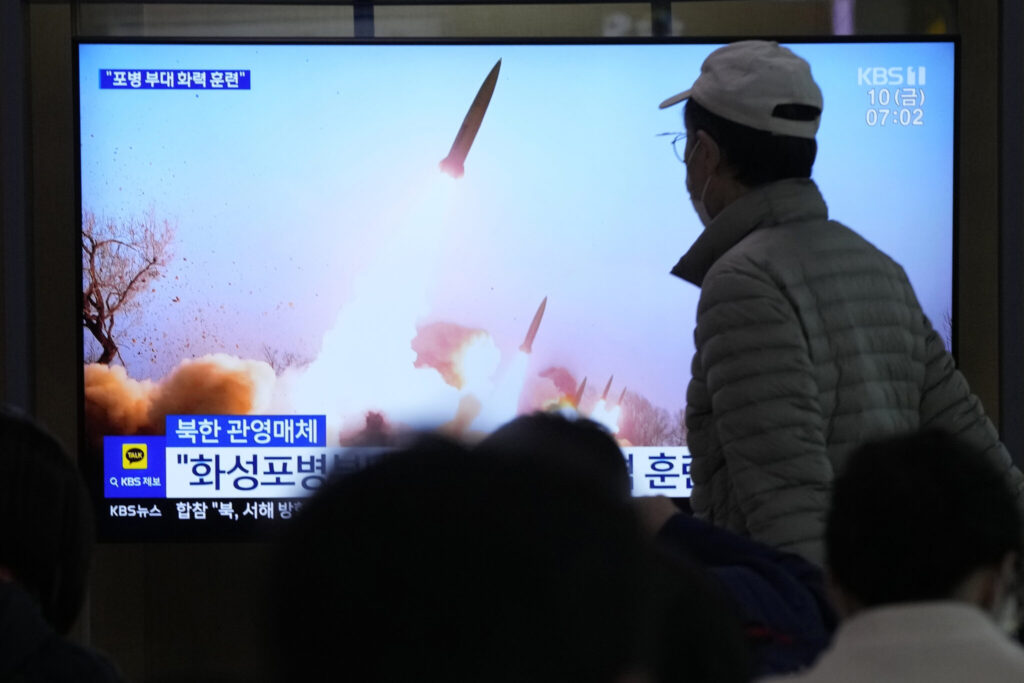
Kim’s comments were in line with an escalatory nuclear doctrine the North set into law last year, which authorizes pre-emptive nuclear strikes in various situations where it may perceive its leadership as under threat, including conventional clashes.
The North Korean report did not specify what types of artillery were involved in Thursday’s exercise or how many rockets were fired. Some of the North’s newer short-range weapons targeting South Korea includes large-sized multiple rocket launchers that experts say blur the boundaries between artillery and ballistic missile systems.
North Korea describes some of its more advanced short-range systems as tactical weapons, which experts say communicates a threat to proactively use them during conventional warfare to blunt the stronger conventional forces of South Korea and the United States.
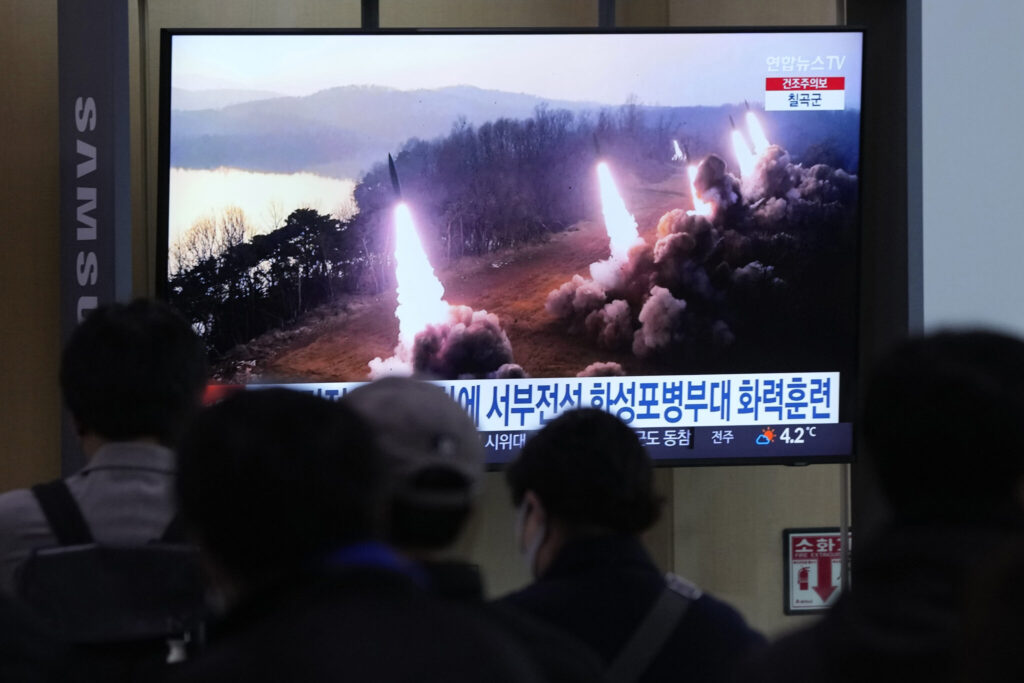
Photos published by North Korea’s official Rodong Sinmun newspaper showed at least six rockets being fired from launch vehicles lined up in an unspecified coastal forest area.
Kim watched the firings from an observation post along with senior military officials and his daughter, believed to be named Kim Ju Ae and possibly around 10 years old.
Since presenting his daughter in public for the first time during an ICBM test launch in November, Kim Jong Un has brought her to major events tied to his military. Analysts say Kim’s showcasing of his daughter, who has been described by state media as “beloved” and “respected,” is to remind the world he has no intention to voluntarily surrender his nuclear weapons, which he apparently sees as the strongest guarantee of his survival and the extension of his family’s dynastic rule.
Coming off a record year in missile testing, North Korea has conducted more weapons demonstrations in 2023, including test launches of an intercontinental ballistic missile, short-range missiles and a purported long-range cruise missile system in recent weeks.
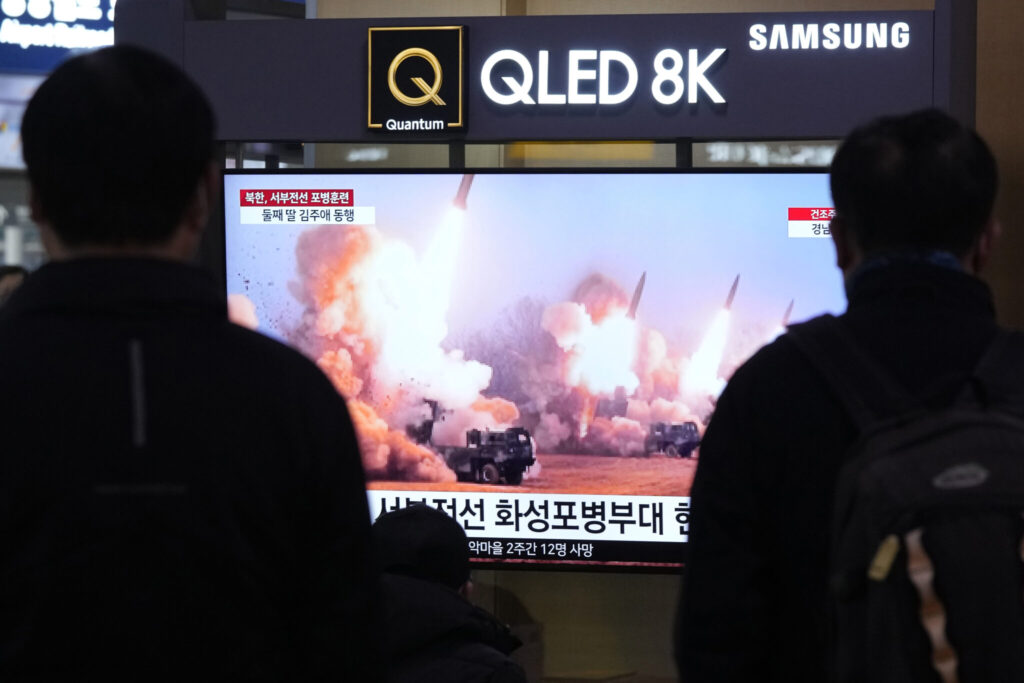
Experts say North Korea with its heightened testing activity and threats is trying to claim an ability to conduct nuclear strikes against South Korea and the U.S. mainland. Kim is trying to force the United States into accepting the North as a nuclear power and wants to negotiate badly needed economic concessions from a position of strength, analysts say.
Diplomacy between the U.S. and North Korea has stalled since 2019 because of disagreements over an easing of crippling U.S.-led sanctions against the North in exchange for steps by the North to wind down its nuclear weapons and missile programs.
Last week, the South Korean and U.S. militaries announced they will conduct computer-simulated command post training March 13 to March 23 and will resume their largest springtime field exercises, which were last held in 2018.
The United States has also recently sent advanced warplanes, including the B-1B and B-52 long-range bombers, to train with South Korean aircraft in a show of strength, triggering protests from North Korea, which describes the allies’ joint drills as invasion rehearsals.
The allies had canceled or scaled back some of their regular drills since 2018, first to support the former Trump administration’s diplomacy with North Korea and later because of the COVID-19 pandemic. But they have been renewing their exercises after North Korea test-fired dozens of missiles last year and issued provocative threats of nuclear conflicts with rivals.
On Tuesday, Kim Yo Jong, the North Korean leader’s powerful sister and one of Pyongyang’s top foreign policy officials, warned that her country is ready if necessary to take “quick, overwhelming action” in the face of the allies’ expanded drills.
In previous statements, she threatened to turn the Pacific into North Korea’s firing range and repeatedly implied that the North might test-fire an ICBM toward those waters on a ballistic trajectory, which would be seen as one of its most provocative weapons demonstrations yet.
All of North Korea’s ICBM tests since 2017 have been conducted on a high angle to avoid the territories of neighbors.

